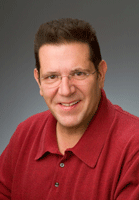Acupuncture
 What is Acupuncture? What is Acupuncture?
Acupuncture is the gentle insertion of very fine needles into specific points on the surface of the body. This process stimulates the movement of energy within the body to generate circulation, unblock restrictions and improve function and flow throughout. Point selection is based on the practitioner's formal and extensive study of over 3000 years of medical experience in Asia
Acupuncture helps to prevent illness by improving the overall functioning of the body's immune
and organ systems. Acupuncture is helpful for:
- Treating existing illnesses and injuries.
- Preventing both recurrence of illnesses and new illness.
- Improving overall health.
There are numerous styles and types of Acupuncture practiced throughout the world. It is generally accepted as having originated in Asia some 3,000 years ago. Today it is widely known in China as part of Traditional Chinese Medicine (TCM). TCM attempts to embrace and distill all of the medical history into a contemporary model. Acupuncture is commonly practiced all over the world by diverse cultures in various forms including Europe, Japan, Korea, Viet Nam and elsewhere. Varieties of styles have naturally evolved over the centuries. In America today, unique and deserving styles and applications of Acupuncture are emerging everywhere, particularly as this ancient tool interfaces with the demands of modern culture and society.
 How does Acupuncture work? How does Acupuncture work?
Chinese energetic medical theory explains that energy or life force (called Qi) circulates and flows throughout the body and over its surfaces in streams called meridians or channels. Each of our organs connect and communicate with its own channel. All the channels are interconnected and each organ connects and communicates through this network of meridians along with muscles, bones and the other organs. There are seventy one meridian/channels in the body.
Vibrant health is a manifestation of the dynamic balance within our body and the ability to appropriately relate to the circumstances of our lives. When we are balanced, the energy (Qi) flows smoothly through the network of channels and successfuly nourishes the organs and tissues. Any obstruction or interruption of the flow of energy will ultimately cause a disruption of the innate balance of the body and over time lead to discomfort, illness and disease.
Acupuncture points are specific points on the surface of the body where the Qi is concentrated and accessible. The Qi becomes engaged and activated when acupuncture needles are inserted at these specific points. A protocol or "recipe" of points is used and begins to move and restore the appropriate flow of Qi. As the proper flow of energy (Qi) is restored the body regains its natural balance. Discomfort and complaints resolve and well-being returns.
 Acupuncture and Modern Science Acupuncture and Modern Science
To the human body, acupuncture needles are a physical stimulus. In Western Science, a stimulus is defined as a detectable change in either the external environment or a detectable change within the body itself. When the body detects a change it produces a response. Although acupuncture is not yet fully understood by Western science, scientists using modern technology can now actually begin to "see" the body's response to acupuncture. For example, using an MRI, researchers have shown that when a needle is inserted at specific acupuncture points on the body, corresponding responses occur in the brain. In the West, acupuncture is most well-known for its ability to relieve pain and so most of the research thus far has only been done in that area. Acupuncture points are now believed by Western Science to stimulate the central nervous system (the brain and spinal cord) to release pain-relieving chemicals into the muscles, spinal cord and brain. Western science also proposes that Acupuncture may stimulate an additional release of chemicals by the brain that include hormones which influence the self-regulating system of the body.
| 


